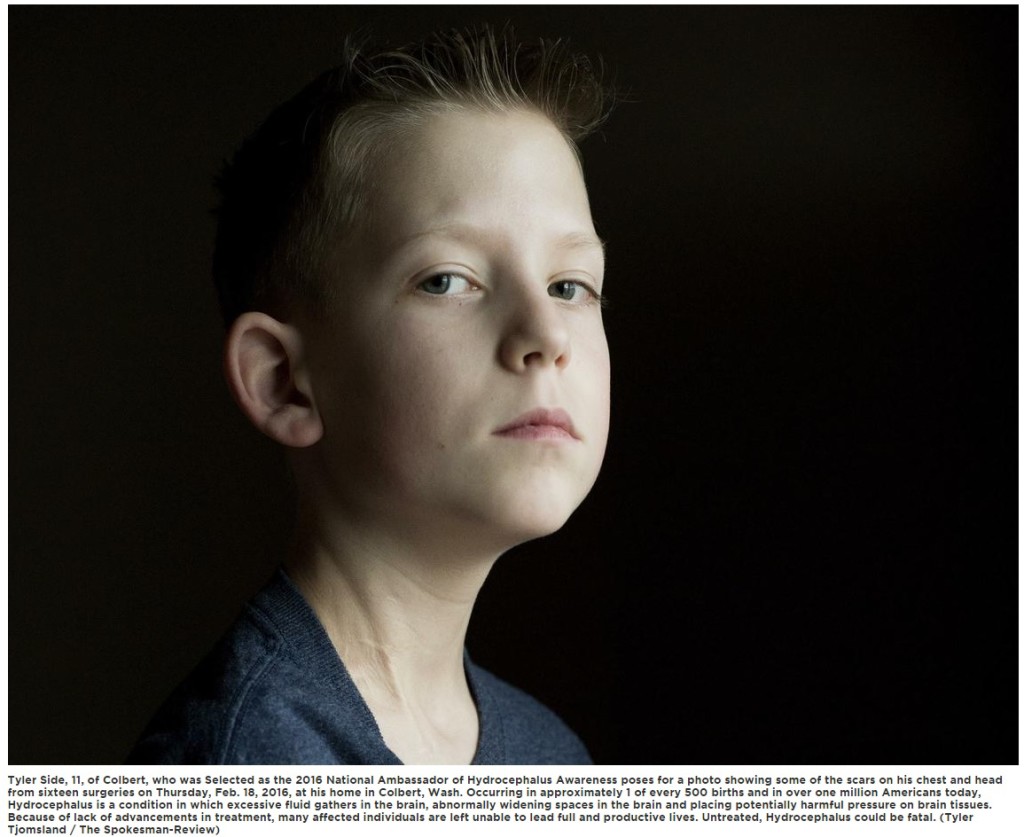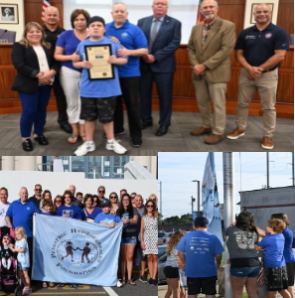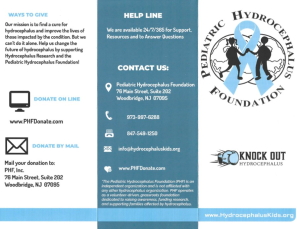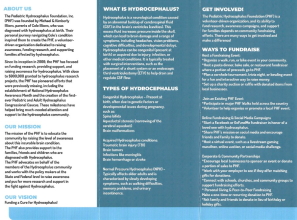PHF In The News: Colbert boy raising awareness about hydrocephalus
March 8, 2016 by PHF
Filed under Uncategorized
Comments Off on PHF In The News: Colbert boy raising awareness about hydrocephalus

Tyler Side is a cheerful, social boy, who smiles often, but the 11-year-old’s scars reveal a childhood studded with struggle.
Tyler has hydrocephalus, an incurable brain condition characterized by excessive cerebrospinal fluid in the brain’s ventricles, which puts harmful pressure on the tissues of his brain. The scars are from the 16 life-saving surgeries the boy has endured due to the condition.
Now, the Colbert boy will use his story to help others with hydrocephalus. The Pediatric Hydrocephalus Foundation recently selected him as one of two 2016 national ambassadors for pediatric hydrocephalus awareness.
“I feel excited,” he said. “I hope that the hydrocephalus foundation can find a cure for it.”
Tyler will be featured in advertising campaigns and promotional materials heading into the eighth annual National Hydrocephalus Awareness Month in September. He and his family also will travel to Washington, D.C., for National Hydrocephalus Awareness Day on Capitol Hill in August.
So many uncertainties
Tyler was born at just 28 weeks gestation at Ramstein Air Base in Germany, where the Sides were stationed. The pregnancy had been healthy and normal, but placental abruption led to an emergency cesarean section and Tyler was born 11 weeks early, weighing a mere 2 pounds 12 ounces. He was rushed to the neonatal intensive care unit and hooked up to a ventilator.
For many days, doctors didn’t know if he would live. Imaging detected bleeding in his brain.
“It was scary,” said his mother, Crystal Side. “It was very traumatic.”
Despite the news, Side and her husband, Chris, remained hopeful that their baby would pull through, but they were uncertain what that would mean in the long run.
When there was no sign of increased bleeding, the family celebrated, although they learned Tyler might never walk or talk because of the damage.
At 20 days old, doctors diagnosed Tyler with post-hemorrhagic hydrocephalus. The family was flown back to the U.S. by a military medical evacuation flight, still wondering what the diagnosis meant for their family and new baby.
“Would he be able to do the things other kids do? Would he be able to lead a full and productive life? There were just so many uncertainties,” Side said. “It was really difficult as a first-time parent.”
Tyler would go on to have numerous surgeries in his first 10 weeks of life, including a bowel resection following a diagnosis of necrotizing enterocolitis, and the family endured many days in the NICU, hoping Tyler’s progress wouldn’t be set back by more surgeries or infections.
Although he is walking and talking today, Tyler is unable to do many of the physical activities kids his age do because of the condition and the risk of injury. He and his family were ecstatic to learn he was selected to represent the cause – an activity they could give a resounding “yes” to. Side said she hopes her son will see that there are other children like him.
“Having him be able to connect with them will be really special,” she said.
More awareness needed
The causes of hydrocephalus are still not well understood. More awareness is needed, as well as better federal funding for research, said Michael Illinois, vice president and national director of advocacy for the Pediatric Hydrocephalus Foundation.
“Our goal is to provide funding to find better treatment options or help modify or update the current treatment options, while having an eye on one day finding a cure,” he said.
To treat hydrocephalus, a neurosurgeon typically places a shunt system in the body to redirect excessive fluid to other parts of the body, where it is reabsorbed.
Shunts are imperfect systems, and complications – mechanical failure, infections, obstructions, or the need to lengthen or replace the catheter – can result in more surgery, according to the National Institute of Brain Disorders and Stroke.
The condition can be congenital or acquired. Symptoms vary depending on factors such as age and disease progression. In infants, a rapidly increasing skull size is a sign of hydrocephalus, as well as vomiting, sleepiness, irritability and seizures.
The disorder occurs in up to 1 in 500 births and affects 1 million Americans.
Untreated, hydrocephalus can be fatal, and despite medical advances, many with the condition remain unable to lead full and productive lives, according to the foundation.
The all-volunteer nonprofit foundation advocates on behalf of members while working with policy makers at state and federal levels to push for more research and support in the fight against hydrocephalus.
It has 30 state chapters, including in Washington. Since 2010, it has awarded $375,000 in grants and donations to hospital and research centers around the nation.
‘It’s been a long journey’
Despite the challenges he has faced, Tyler has “such a great personality,” his mother said.
“Tyler is such a happy kid and always so pleasant,” she said. “All of his friends, teachers, everyone just loves him.”
She said, “it’s just amazing how well he’s doing.”
“He’s done great,” she said. “It’s been a long journey on some things. To look at him today, most people would never know that he’s been through what he has.”
 Read more at: https://html.com/attributes/img-width/>
Read more at: https://html.com/attributes/img-width/>



























